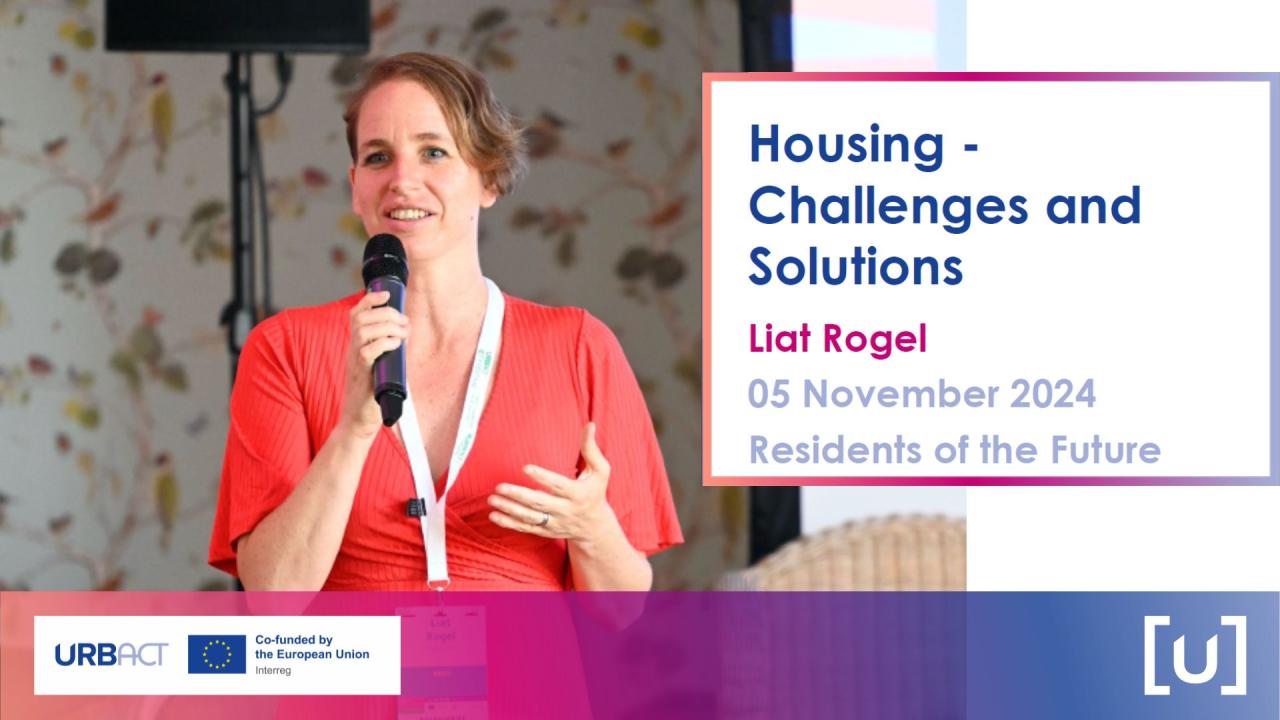Shrinking cities, grappling with population decline, economic stagnation, and aging infrastructure, face housing issues that are no less urgent—or complex.These Shrinking cities contend with a perfect storm of pressures: outdated housing stock in need of major renovations, limited affordable housing options, and competition from short-term rentals. As one city representative noted in our survey:
“Our Shrinking and aging population needs new housing options, yet older housing stock is left abandoned due to high renovation costs.” (Iisalmi, Finland)

Recognizing the need for innovative, context-sensitive solutions, the Residents of the Future network gathered to reflect on these challenges and explore strategies for creating more sustainable housing systems in a workshop that was held on November 5th 2024.
Key Housing Challenges in Shrinking Cities
The survey illuminated several pressing issues shared among the participating cities, suggesting that housing challenges in Shrinking cities require a specific approach:
Aging Housing Stock
In cities like Šibenik and Saint Quentin, much of the housing requires major renovations, but limited resources and investment make these upgrades difficult.
“A significant portion of the housing stock requires major renovations, but there’s limited funding and high construction costs.” (Saint Quentin, France)High Housing Cost Burden
Housing costs, though relatively lower than in major urban centres, remain a burden due to local wage stagnation and high energy costs associated with outdated housing.
“Housing costs are around 30% of household income, but with low local wages, this remains a burden for residents.” (Plasencia, Spain)Limited Affordable Options and Public Housing
Social housing options are limited, catering mostly to vulnerable groups but leaving a gap for young professionals, students, and working families who also struggle to afford market-rate rentals.
“We have social housing, but it caters to a small portion of the population, leaving families and young professionals struggling to find affordable options.” (Mangualde, Portugal)Short-Term Rental Market Pressure
Cities such as Šibenik and Plasencia report that short-term rentals are reducing long-term rental options and driving up prices in certain neighbourhoods.
“Tourist activities are pushing residents out of the city center, and short-term rentals drive up housing prices.” (Šibenik, Croatia)Fragmented Urban Development
Disparities in attractiveness between neighbourhoods add to housing inequality, particularly in smaller cities with limited development planning.

Exploring Housing Solutions for Shrinking Cities
Addressing these challenges requires a targeted mix of housing strategies, drawing on examples from across Europe. Solutions can be organised into categories based on approaches that address specific issues:
Public-Private Partnerships for Affordable Housing
Public-private partnerships can help mobilise resources and expertise to create affordable housing in cities with limited funds. For example, the Cenni di Cambiamento project in Milan used public-private funding to provide affordable housing units. Similarly, Homes4All in Turin brings together private investors, nonprofits, and public authorities to acquire and renovate housing for vulnerable populations, offering an innovative approach to revitalising existing housing stock affordably.
Direct Public Interventions
Cities can also adopt direct public interventions, leveraging public land and assets to increase affordable housing stock. Porto 15 in Bologna is an example of a publicly funded cohousing project that provides affordable housing specifically for young people, creating a stable, community-oriented environment. The passive house renovation in Freiburg demonstrates how public initiatives can turn outdated housing into energy-efficient, affordable residences, addressing both the aging housing stock and rising energy costs.
Cooperative Housing and Community Land Trusts
Cooperative and community land trust models provide sustainable, community-focused solutions by involving residents in the management and affordability of their homes. La Borda in Barcelona, for instance, is a resident-driven cooperative offering affordable housing without ownership rights, ensuring long-term affordability. Similarly, CALICO in Brussels operates as a Community Land Trust, where residents collectively manage housing to prevent speculation and support affordable, multigenerational living.
Regulation of Short-Term Rentals
Effective regulation of short-term rentals can help balance tourism with local housing needs, ensuring long-term affordability. In cities where short-term rentals impact housing availability, policies like Amsterdam’s 30-day limit or Barcelona’s licensing requirements have shown that limiting rental days and mandating registration can prevent short-term rentals from destabilising the housing market.

Toward Contextualized, Data-Driven Solutions
While these solutions offer inspiration, their success depends on the local context. Housing strategies must be tailored to the specific needs, resources, and demographics of each city. To support this, cities should prioritise:
Data Collection and Mapping
Understanding the housing landscape through data is critical to identifying gaps and opportunities.
Dedicated Housing Units
Establishing teams to monitor trends, enforce regulations, and engage stakeholders can streamline implementation.
Integrated Action Plans (IAP)
Aligning housing strategies with broader urban development goals ensures that solutions are both effective and sustainable.
Integrating Housing Solutions into IAPs
The cities in the Residents of the Future network expressed a strong commitment to integrating the insights from the workshop into their Integrated Action Plans (IAPs). Many plan to adapt strategies like public-private partnerships or cooperative housing models to address their specific housing challenges. For instance, cities struggling with aging housing stock are exploring renovation incentives tied to affordability, inspired by the cited projects. Others aim to strengthen their governance tools, such as creating dedicated housing units or adopting planning measures like inclusionary zoning, to ensure long-term affordability and equitable urban development. Additionally, cities impacted by short-term rentals emphasized the need to develop tailored regulatory frameworks to balance tourism and housing needs, drawing on examples like rental day limits. This tailored approach ensures that each city’s IAP reflects both their local context and the shared expertise of the network, laying the groundwork for sustainable, inclusive housing solutions.
The following five takeaways highlight the most effective approaches for addressing housing challenges in Shrinking cities. Each comes with its own set of benefits and challenges, as cities consider how to integrate them into their Integrated Action Plans (IAPs):
In conclusion, housing solutions for Shrinking cities must be carefully crafted to fit local contexts and guided by data. Cities should focus on developing Integrated Action Plans that balance these strategies, integrating public-private collaborations, urban regulations, and community-driven models to create resilient, affordable, and sustainable housing systems. By learning from one another’s experiences and continuing to refine these solutions, cities can pave the way for housing systems that not only meet current needs but also foster long-term social and economic sustainability.

